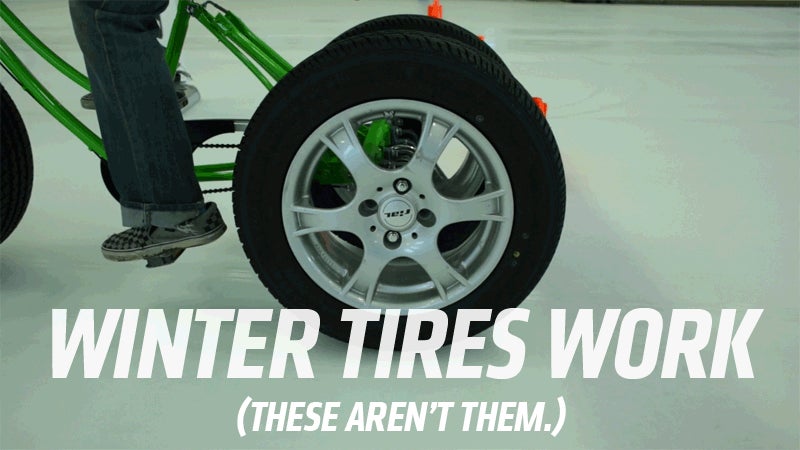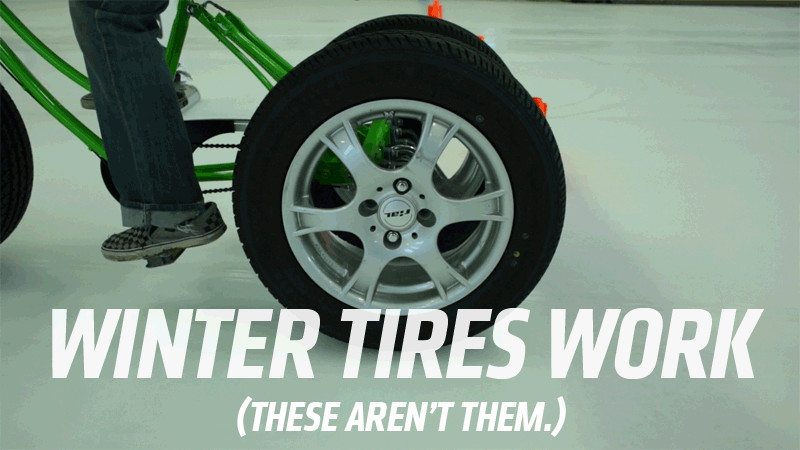
Intellectually, you probably understand that winter tires are better in crappy weather. But understanding and feeling are quite different. It’s difficult to process out everything between you and the tire to get a good sense of what’s going on. Unless you take away the car part of the equation.
Looking at all-seasons and winter tires side-by-side shows a few visual differences, and feeling the slightly softer rubber compound of a winter tire gives some sensory experience to the difference as well. I suppose you could taste them, too, but I think to really tell the difference and see what a winter tire does, you have to feel it.
You certainly can feel it in a car, but there’s so much metal and traction control and torque between you and the tire, it’s hard to distill out exactly what the tires are doing. But if we reduce the system to just person/simple machine/tire, we could tell exactly what’s going on.
Advertisement
Happily, I got a chance to do so, thanks to Bridgestone and Tire Rack, on an ice rink at Notre Dame. Some possibly bored or drunk engineers made these fantastic little car-wheel tricycles, and they let me try them out on the ice, one with all-seasons, and one with winter tires (the pleasingly jive-talking alien-sounding-named Blizzaks, in this case). Here’s how that went:
Sponsored
As you can see, and heard me say, the grip of the winter tires is significantly better than the all seasons. And keep in mind, the surface here is an ice rink, pretty much the go-to cliché/analogy of the worst sort of surface you ever would want to drive on.
There’s a number of reasons why the winter tires do so much better. The rubber is softer, and gets less rock-hard than a normal tire in cold weather, which means it can deform as needed. It has more sipes, which is what all those little cuts and grooves in a tire are called. Those sipes remove water from the rubber/road interface, and provide more gripping surfaces.
Winter tires have bigger tread blocks, too, which provides bigger and deeper surfaces for the tire to bite into the icy/snowy/road, and , in snowy conditions, you actually want the tire to get packed with snow, because the snow-snow friction bond is really quite good. It’s why snowmen stick together as well as they do.
Also, note that these are not studded tires; studded tires are exciting in a sort of fetishy way, but they tear up roads, are illegal many places, and in most cases, you don’t really need them.
There’s actually a lot of science behind why winter tires work, but the big thing to remember is that it’s not just hype. Your tire is the interface between the car’s power and ability and the road itself, and if the tires suck, not all the torque or traction control or 4WD or AWD is going to matter one icy bit.
If you’re driving in an area with a terrible winter, please, get some tires that make sense. You can always stick your old crappy ones on a modified tricycle and slowly drift around like a grinning fool. It’s fun.
Contact the author at jason@jalopnik.com.













